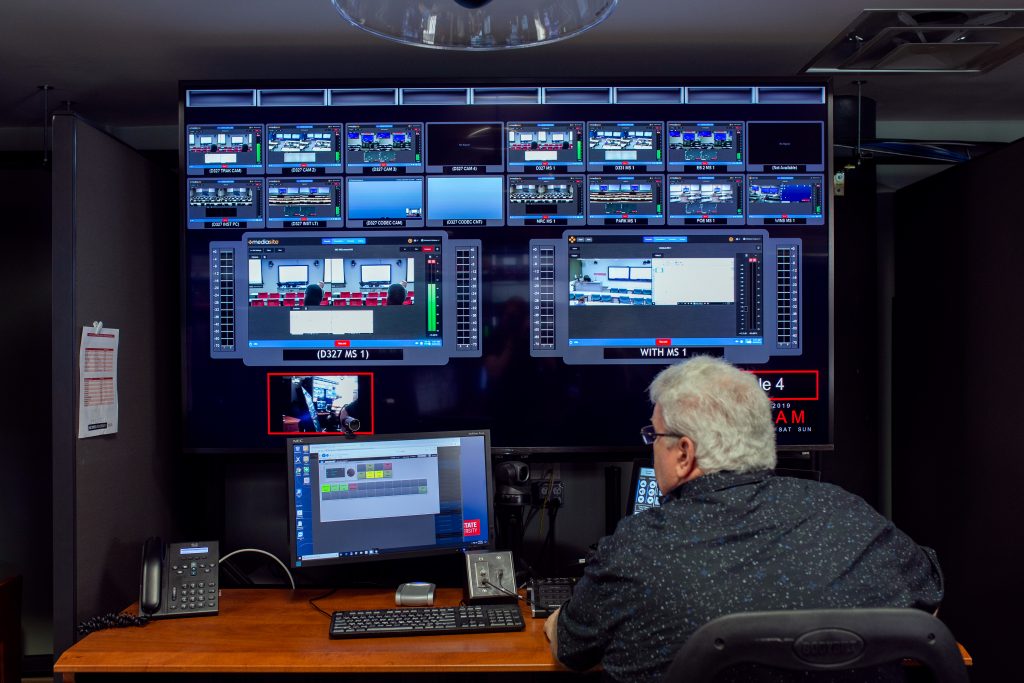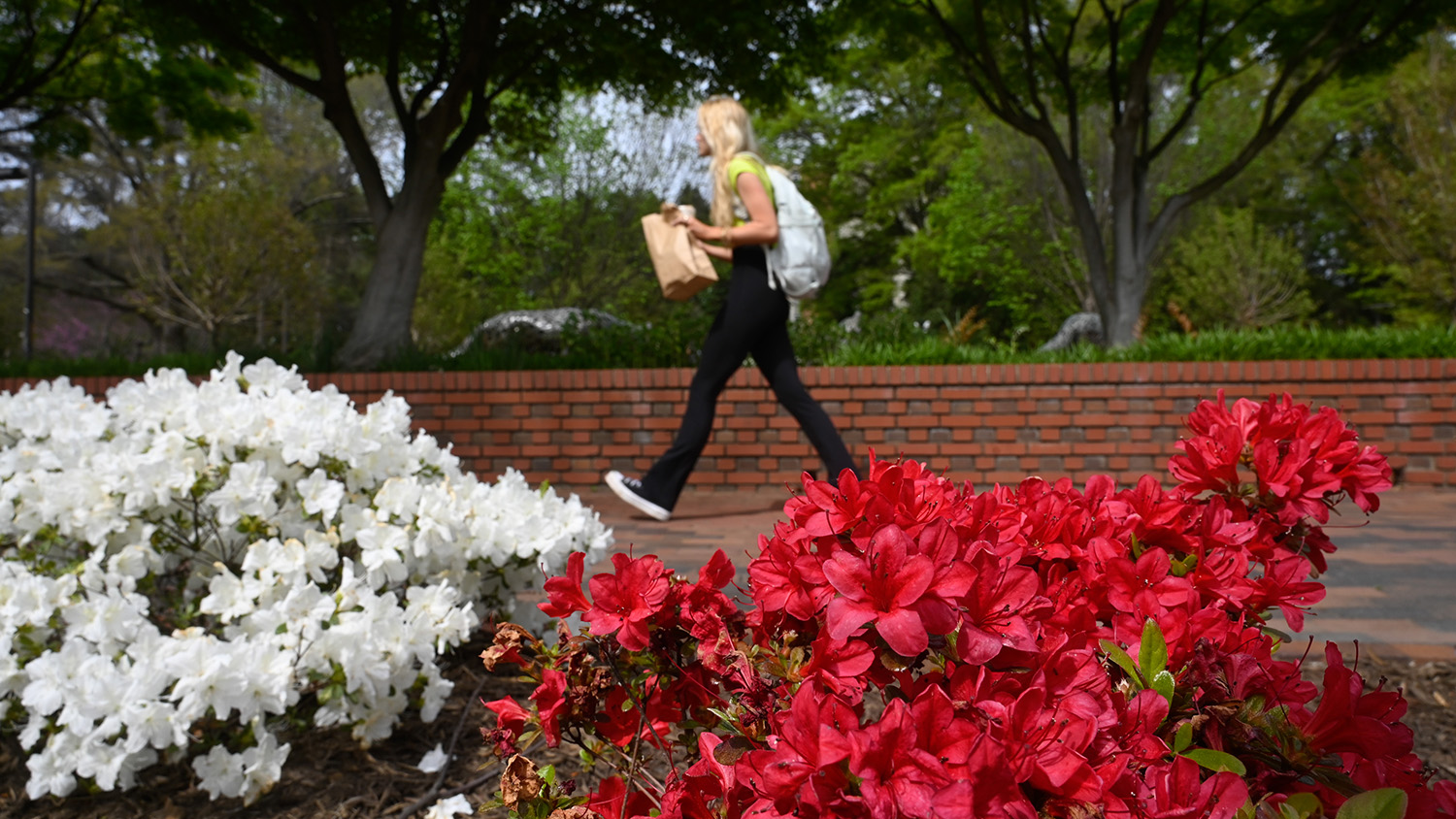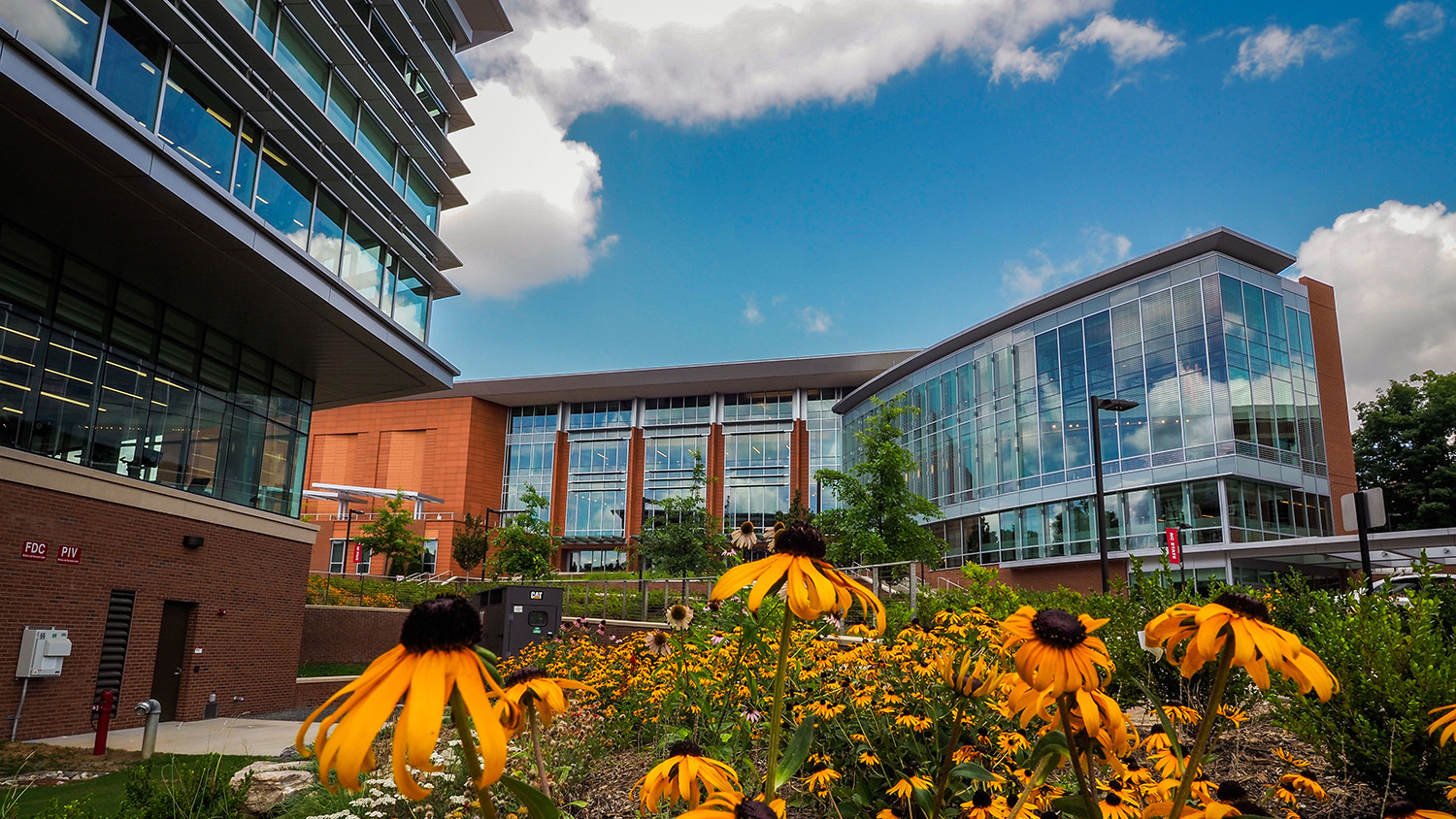Central Control Room Overhauls Technology

DELTA’s Central Control Room (CCR) is where all the magic of recording distance education classes happens facilitated by Video Communication Services (VCS).

This past summer, the CCR went through a complete overhaul of the classroom source monitoring system, essentially rebuilding the system from scratch using internet protocol (IP) technology. The transition was necessary due to the aging infrastructure that required the multiviewer system, used to transmit and distribute media from DELTA classrooms to CCR, to be decommissioned.
The old system had been in place since the inception of CCR in 2009 which allowed multiple video and audio channels, audio meters, clocks and data to be distributed and integrated among several displays for monitoring and switching purposes. While the old system adequately served VCS operations, they were looking to provide more flexibility and scalability.
The goal was to transition to an audio-visual over internet protocol (AVoIP) solution using DELTA’s pre-existing fiber infrastructure for source signal transmission and distribution, from classroom to CCR, for monitoring and lecture capture.
The technology upgrade increases flexibility for our classroom support technicians and scalability for future distance education instructional support efforts here on campus.
More About The Upgrade
Senior Associate Director of VCS Tony Pearson and Classroom Services Manager Shawn Colvin spent nearly four years evaluating products from various vendors to upgrade the CCR.
The pair considered nearly a dozen solutions during this time before choosing Imagine Communications as the vendor with the best solution for the AVoIP solution. The equipment was installed in Ricks Hall Addition.
Colvin managed the project along with an implementation team that included Tim Hinds, Darren Ley, Brandon Joyner, Brandon Pope and Dan Copher.
Prior to the AVoIP project, each station/pod was equipped with a quad view from four separate monitors. Now, each workstation, or pod, is equipped with one 85-inch screen which displays several different templates that can be populated with source signals (HD cameras, computer feeds, far-site video, etc.) from nine DELTA classrooms.
Settling In
Right off the bat, technicians had greater flexibility and the ability to monitor more classroom source signals at any given point to efficiently manage their daily workload. The larger screens at the workstations provide a better view inside the classrooms.
Each DELTA classroom contains up to 16 sources (HD cameras, instructor computers, document cameras, etc.) which are transmitted back to CCR for monitoring purposes.
“We were somewhat limited on the number of viewable sources within a static multiviewer display through the old system. Now, we have increased flexibility to customize multiviewer templates to accommodate any workflow scenario the technicians may encounter throughout the semester. Any source within our nine classrooms is routable with dynamic labeling to identify that particular classroom source,” said Colvin.

The technicians can now more effectively provide instructional technology support to assist faculty in building student success through the use of technology while also serving the broader campus community.
Colvin described a scenario when having the flexibility of being able to monitor more video sources at any pod in the CCR is important.
“If we’re connected to any far site, say UNC Asheville, and we’re monitoring video and content being transmitted from our classroom to their classroom using our video conferencing technology, if for whatever reason we lose content, the technicians now have the ability to respond quicker because they now have a real-time visual of the source rather than relying on someone from UNCA to alert us that they can’t see the lecture material. The support response time on technical issues has greatly increased,” said Colvin.
In addition to the seven full-time classroom support technicians, VCS also staffs part-time on-site technicians who serve as “runners” to provide in-classroom customer service to faculty.
“We want faculty to focus on teaching while utilizing technology to enhance learning in our media-rich classroom environment. Our team thrives on customer service and the goal is to provide a student-centered, on-campus classroom experience to the distance students,” said Colvin. “Our technicians are certified professionals and utilized established quality control measures to make sure captured lectures meet VCS standards before they are released to students.”
A Nod To CCR’s History
The idea for the CCR began a decade ago and went live in 2012. Pearson led the change to the centralized operation on Main Campus to manage the nine DELTA-supported classrooms as well as a mini studio and a conference room in Ricks Hall. VCS staff continued to provide a high level of customer service to faculty when technicians moved away from the classroom-based control rooms.
Colvin said, “Tony saw there would be an increased preference and need for a more centralized service, which also allowed the university to capture more seats in the classroom with the removal of classroom-based control rooms.”
The CCR established a way for one technician to support multiple classes instead of one at a time. The CCR currently has a total of seven active individual workstations with the ability to monitor any DELTA classroom at any given time.
Related article:
Service that Scales: Recording Distance Education Courses — From a Distance (From 2014)


